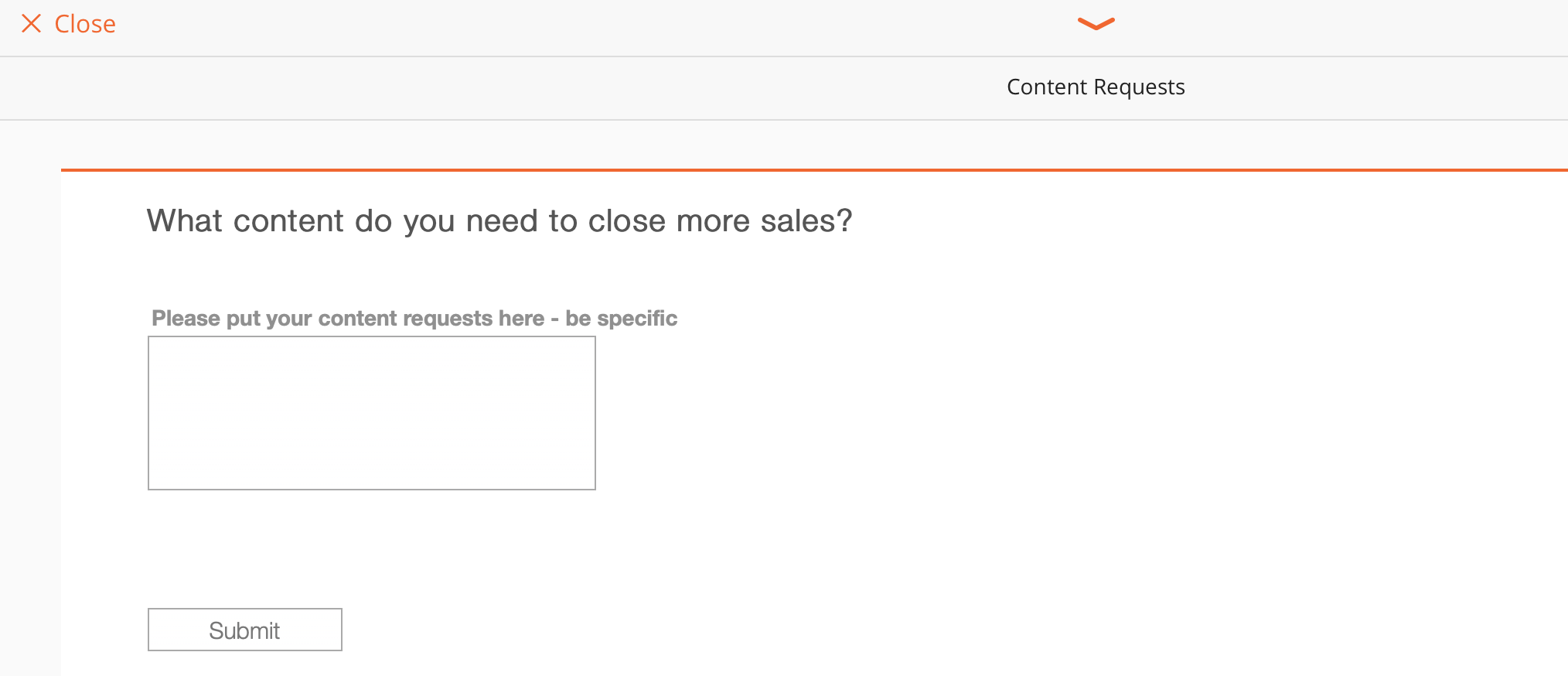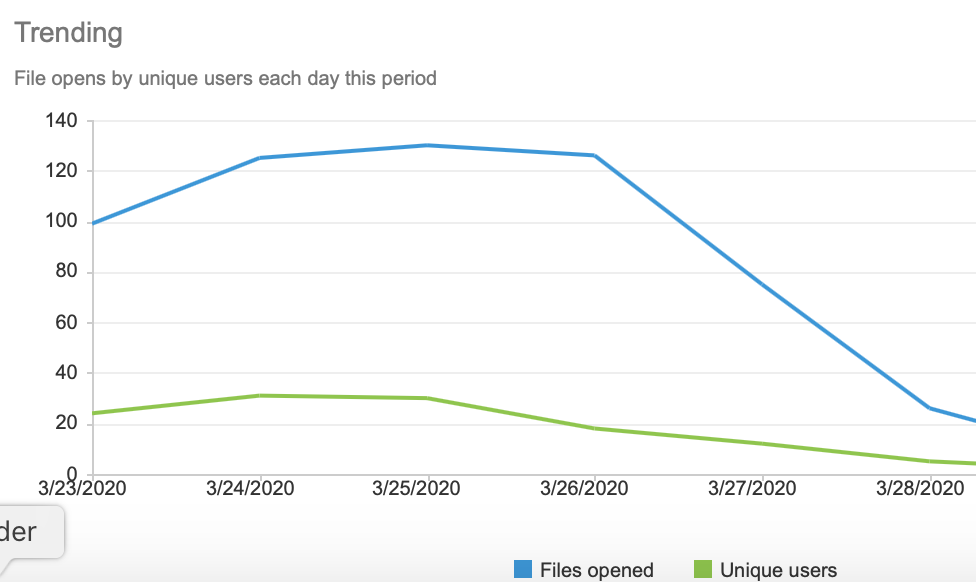Sales manager enablement is critical to the overall success of your Sales Enablement program. I see it in our own business with our customers, and I hear it from every practitioner with whom I speak.
Sales managers are struggling. Much like sellers partner with a customer to solve their business challenges, you need to partner with sales managers to find ways to overcome their challenges. If you expect their help with any initiative, help solve their problems.
A word of caution. You need to remain focused on solving these business problems, not on the tactics you want to use. Sales managers do not care about training or content unless it helps them meet their goals.
Who are the frontline sales managers?
Frontline sales managers often get promoted into a management role as a result of being a great salesperson. Too often, they are provided no training on management, sales coaching skills, or how to collaborate across the organization to achieve long-term, positive sales outcomes. (Grab a .pdf of our Complete Guide to Sales Training and Coaching for 2020 here)
This approach is the equivalent of taking your fastest 100-yard sprinter and putting them into an American football game without knowing the playbook, without training on catching the ball, on blocking schemes, and without any uniform or protective equipment. They may be good at one aspect of the game (speed), but without the tools (pads), the sales playbook, training (the practice sessions), and other essential skills (catching, blocking), they will be ineffective.
Sales management is a difficult job for even the most highly trained professionals. Give your managers a fighting chance at being successful and approach this effort with empathy.
Why you must focus on the sales managers first

Beyond the fact that sales managers have an insanely challenging job, there are other good reasons to focus on their needs.
As humans, we are risk-averse and will not embrace change unless we have to do so. Your sales manager's support will be a critical lever to incentivize the new behaviors you are trying to bring into reality.
Note, during the last Sales Enablement Society National Conference; we ran an experience room focused on Sales Enablement adoption. As a part of this event, we asked fellow practitioners for their feedback on where their programs are, their biggest challenges, and tactics they are using to overcome obstacles.
The most common challenge we heard had to do with the lack of support from sales managers. This lack of support is a challenge across many companies.
Challenges of sales manager enablement
It's not surprising. Sales managers often feel as if they are carrying the entire company on their shoulders and getting no support. Here are a few of the common complaints.
- Their bosses are raising their team quotas all the time, and these leaders cannot understand how anyone could struggle to sell their products.
- Their teams are complaining about their compensation plans, unrealistic quotas, and the fact that they need engineering to put one more feature in place so they can make that big sale they are counting on for the quarter.
- And the rest of the company doesn't help. For example, not enough leads from marketing — no support from engineering – finance is pushing back on the discounts needed to sell the product.
Sales managers are looking for allies who can help them meet their goals. You, as an enablement professional, have a lot to offer, and you should sit down with managers to listen, document, and understand their goals and challenges. You need to become their trusted partner.
However, if you simply sit down with them without taking time to understand what they think about Enablement, you may hit a brick wall. So, what do many sales managers think about enablement? Here are a few of the things I hear when I ask them.
- If you have not been in sales, I don't want you telling me what to do. At the very least, dig in and spend time understanding the day-to-day challenges your sellers have.
- Ensure KPIs drive the right behaviors that lead towards achieving my goals. Sales Enablement KPIs must be in alignment with business goals.
- Generic content does not add value. Your sellers must be able to personalize to the unique customer they are working with efficiently. Ensure that it is easy for sellers to find and customize the content pieces they need.
- Make training worthwhile. Learning time reduces selling time, make sure it is time well spent.
- Sales Enablement teams need to support role plays. While few sellers love this activity, it is a critical tool for preparing sellers for success.
- Sales Coaching is critical—arm managers and coaches with skills to spend more time coaching.
You need to simplify your sellers' lives and help them reduce the time spent on non-selling activities.
Sounds like an uphill battle, why not start with the sellers?
Let's begin by looking at a hypothetical sales organization that consists of ten sales managers and one hundred salespeople.
If you focus just on the sellers in this hypothetical organization, you will likely get fifteen to twenty of them using your solutions. The usage will be ad hoc and not oriented and well-aligned with your business. If any of these sellers leave your company, you will need to battle to get their replacements using the solutions.
However, if you focus on getting adoption amongst the sales managers, you are likely to get two to three of them using your solutions. Managers are more likely to mandate the usage of these processes and tools by their teams, getting you an additional thirty users.
Since the sales managers are likely to mandate usage, they will enforce and support your efforts. When new employees join their teams, the sales managers will require the use of your solutions. Adoption will stay steady without your constant focus.
Furthermore, if you do your job well, these managers will be more successful than their peers who are not leveraging enablement. Success stories spread, leading other managers to seek you out.
How to begin coordinating better with your sales managers
Communication is key to enablement. Working closely with sales managers allows you to step into their shoes and better understand their challenges.
Regular one-on-ones with the sales managers
Setup weekly or bi-monthly meetings with your sales managers to review their needs and gain an understanding of their priorities.
Take time to grab lunch and build a real relationship when possible. This additional level of familiarity will create trust.
Here is a detailed guide for running one-on-one meetings.
Feedback channels beyond one-on-0nes
One on one meetings with sales managers is an excellent starting point. Still, you want to create multiple channels to gather feedback from across the organization and, preferably, at the time that the needs arise. Based on the tools your organization is using, consider these feedback channels:
- Messaging channels like Slack
- Forms setup within your Sales Enablement, CRM, or other vital systems.

Where suggestions align with a specific team, review the priorities with the appropriate managers and team members. This alignment will allow you to build a backlog of work that you can use to deliver both on short-term, tactical needs as well as to plan out strategic initiatives.
Priority reviews across the revenue teams
Many of the projects you will want to tackle will impact multiple teams, and you must determine how to prioritize best. If possible, set up review sessions across your teams to review these requests and set priorities based upon this team's feedback.
Invite the appropriate leadership team members so that they can also weigh in.
Enablement teams must partner with sales managers and individual sellers to ensure they are delivering the right value to the organization. Use our Sales Enablement Survey to determine the questions to ask them to ensure you are meeting their needs.
Increasing team performance
Sales manager performance is measured on a handful of critical metrics, the most important of which is quota attainment. Those managers that are hitting this goal are often hesitant to change any process or approach. Their bonuses are rolling in, and they don't want to rock the boat.
Sales managers who are running teams that are not achieving their quotas, however, are much more likely to want to partner with you. So too are those that are new to the organization or new to their roles.
Before diving into our tips for partnering with sales managers to increase team performance, let's quickly review the key metrics we will impact as we strive to help sales managers achieve their quota targets.
Deal conversion rates
Sales Enablement will drive additional revenue by increasing the percentage of deals you win.
Deal stalls
The reality is that some deals linger in your pipeline.
They enter with assurances by the team that the opportunity is fully qualified. Just do your sales thing, and let's start counting the revenue. Unfortunately, sometimes the deal gets stuck at a specific point.
There are countless reasons for a stall, some are avoidable, and some are not. However, your efforts should ensure the avoidable situations are not problems, and the unavoidable solutions are discovered sooner, reducing time spent on "unwinnable" deals.
The result of better managing deals and avoiding stalls is that you will have the opportunity to win some percentage of these opportunities, and that is money in the bank.
Lost deals
Guess what? Some percentage of those deals that you lost should have been won.
Many of the reasons that lead to deals stalling also lead to deal losses. Maybe you failed to educate your buyer as to the reasons why your product solved their problem. Perhaps a competitor did a better job personalizing their messaging for the buyer.
Your efforts need to help your teams overcome these challenges and more.
Time-spent on active deals in the pipeline
Sales Enablement will help sellers focus on the right deals. This increased focus will lead to more revenue per salesperson per hour spent selling.
Upsell & cross-sell
As noted previously, your sales reps will be able to spend more time focused on the right deals. This focus, combined with clear messaging, will lead to an increase in the average selling price (ASP). Measure this increase by looking at the average ASP per deal per seller.
Onboarding time for new sellers or new product releases
It can be challenging for sales teams to come up to speed when new products, or product updates, are available. Your enablement efforts must increase the onboarding speed for any changes, but especially ones related to new capabilities. Measure the time it takes to sellers to reach quota and track the revenue increase per month as a result.
For suggestions specific to onboarding, grab a .pdf of the Sales Onboarding Guide.
Reduced discounting on deals
Discounts are a sign that your sellers are not helping buyers understand the full value of your solution. If they were doing so, buyers would not be pushing for aggressive discounts. CSO Insights reports that the average B2B discount is 17.9%.
Your Sales Enablement activities should help tackle this problem head-on, and you should measure the increase in ASP, as well as the discount percentage on deals, per deal per salesperson.
A word of caution
It is true; you can't improve that which you can't measure.
However, there is danger in becoming overly focused on metrics.
- If you focus entirely on the speed of the sales process, it may lead you to deliver poor customer experience during your interactions with customers.
- If you only focus on win rates, sellers may not pursue, or track, deals they feel are of lower value or lower likelihood of winning.
- If you focus entirely on adoption, you could be forcing people to use poor processes or tools.
You must leverage a combined approach with multiple metrics used to triangulate your path to success.
To create the best possible alignment:
- Co-develop strategies and get buy-in on metrics.
- Leverage multiple metrics such as adoption, deal velocity, win rates, discounting, CSAT/NPS scores.
- Collaborate
- Evaluate and adjust as needed.
Sales Enablement best practices
To achieve Sales Enablement success, you must get buy-in and support from the top of the go-to-market organization. This leader, or group of leaders, must be driving the team to participate in, to collaborate upon, and to leverage the processes and tools your team is putting forth. Without this top-down support, you will fail.
In addition to top-down support, you will want to put these best practices into action.
Weekly training sessions
Remember that anytime you take sellers away from selling, you need to be providing real value. Your training schedule should be built out in collaboration with your sales managers and other critical members of the go-to-market team.
These weekly training sessions will be a mix of product/services training, sales methodology, selling skills, and so forth. Recently, for example, we built an ROI calculator as part of our platform. We set up a training session and created a course to reinforce their learning. This combination is an excellent way to train the team.
Give back selling time
Alarmingly, only 34 percent of a rep’s day is actually spent selling, according to Accenture and CSO Insights’ research. - Source: Accenture - Deliver a Distinct Seller Experience
Sales Enablement teams need to partner with sales managers to identify tools, content, training, and process improvements that reduce the time sellers spend on non-selling activities. Approaches will vary, but consider:
- Delivering information to sellers at the time of need, just-in-time, versus requiring them to search for the information they need to remain productive.
- Provide easy-to-personalize templates (that are already approved by legal, compliance, etc…) to save sellers time searching for and customizing content.
Value-driven conversations
Reps should be equipped with the information they need to enter a customer or prospect facing convo to make it as valuable as possible.
Agile approaches to Sales Enablement
Agile began as an engineering process to more predictably deliver change incrementally. The four values and twelve principles of agile define a framework that can be applied to business functions such as sales and marketing. Here are the twelve principles of agile restated for agile practices in sales enablement:
The 12 principles of agile Sales Enablement
Employee/Customer satisfaction through early and continuous delivery
People are happier when they receive updates at regular intervals rather than waiting for extended periods.
Accommodate changing requirements throughout the sales process
The needs of your sellers and their prospects will change throughout the buying journey. Your Sales Enablement efforts must map across the buyer journey, and your Enablement team must be prepared, or proactive enough, to meet the needs of buyers with various business challenges, of different personas, across industries, and so forth.
Frequent delivery of content and training
As previously stated, sales are a real-time activity, and your sellers need information now, not a month from now.
Collaboration between sales, marketing, and customer success teams
Better decisions are made, and organizations are more productive when all are working together.
What's more, research from Forrester SiriusDecisions demonstrates that organizations that maintain a focus on alignment achieve up to 19% faster revenue growth and up to 15% higher profitability. That's money in the bank.
Support, trust, and motivate the people involved
Motivated teams are more likely to deliver their best work than unhappy groups.
Enable face-to-face interactions
Communication is more successful when teams are co-located. However, this is rarely possible as many sales roles require the life of the road warrior. Supplement face-to-face interactions with video conferencing where possible.
Sales outcomes are the primary measure of success
Enablement teams support the business in adding customers, expanding the products/services existing customers are using, and keeping customers happy (reducing churn).
Agile processes to support a consistent delivery pace
Teams establish a repeatable and maintainable speed at which they can deliver content and training consistently and predictably.
Attention to brand, compliance, and personalization enhances agility
Your customer-facing teams will need to customize whatever you provide them to work for the specific customer they are speaking with at the time. Deliver content to the groups in a manner that simplifies their lives.
Simplicity
Do not overcomplicate. Deliver just enough to get the job done for right now.
Self-organizing teams encourage excellent outcomes
Skilled and motivated team members who have decision-making power, take ownership, communicate regularly with other team members, and share ideas that deliver quality outcomes.
Regular reflections on how to become more effective
Post-mortems are a critical component of any self-improvement program. Following each sprint of work, discuss what worked well, what could be improved, and use this information to improve processes, advance skills, and improve how teams collaborate to become more efficient and effective continually.
Learn how to Run a Seriously Productive Project Post-Mortem.
Applying agile Sales Enablement
Preparing for agile Sales Enablement success means that you must follow many of the defined best practices that we preach all the time.
Create a Sales Enablement charter
The Sales Enablement charter helps us understand our goals, how we will accomplish them, and what we will measure to demonstrate success. It is a living document that should be regularly updated to reflect changing realities, and it is a critical part of your program.
You can get started creating an exceptional charter using this .pdf we put out with a Sales Enablement Charter template.
Patience
Results are not always going to come immediately. It takes time to build out an enablement process that works for your team. People get busy and may not respond to things right away; that's okay.
Quality over quantity
As your organization sees your ability to deliver results, the requests will begin rolling in. Focus on delivering what your sellers require, to the minimum level necessary, to balance speed and quality. When you need to make a trade-off, err on the side of quality first.
Quick wins matter
Somewhat counter to the last point, some requests will be fast to implement and provide you and your team with momentum and positive PR.
Communicate and collaborate
You never have enough resources to enable the team to the extent desired. You must collaborate across the entire organization to gather ideas as well as to deliver results.
You cannot be an island unto yourself.
Focus on adoption
Sales Enablement is not a Field of Dreams; if you build it, there is no guarantee that they will come and use it. You must focus ruthlessly on adoption.
Before delivering anything, be clear as to the value of your efforts and who will use it.
Does the intended audience use what you deliver?
- If not, why not?
- If yes, does it have the intended outcome?
- You cannot afford to spend time delivering solutions people do not use as intended. You cannot afford to spend time building solutions that do not deliver on their goals.

Ensure, as much as possible, that all work maps back to goals and objectives your sales managers have to meet. As you deliver services that help their teams achieve these goals, spread the news. You need everyone to understand the value you are creating.
Final Thoughts
According to research from Salesforce, 69% of businesses do not hit their revenue goals, and 54% of reps do not hit quota.
Your sales managers are right in the middle of all of this and need to be your most focus as you seek to enable the entire go-to-market team.
How are you going to change your relationships with these critical partners to transform your business for the better?

